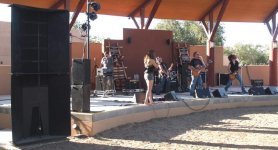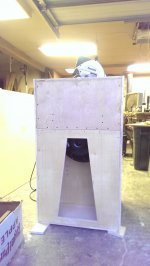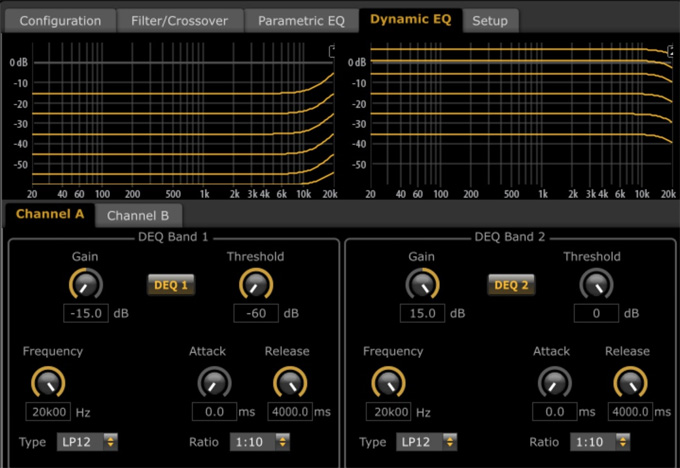Yes there are 😱.Are there any problems with the dimension of panel G from the plan in post #487?
The bottom of part "F" is 89 degrees, the front of "G" is a 5 degree angle, the back of "G" is 3 degrees as shown in post #478.
Unfortunately, those angles were not shown in Neo Dan's plans in post #487, and I did not notice they did not include those angles until you mentioned it.
Yes there are 😱.
The bottom of part "F" is 89 degrees, the front of "G" is a 5 degree angle, the back of "G" is 3 degrees as shown in post #478.
Unfortunately, those angles were not shown in Neo Dan's plans in post #487, and I did not notice they did not include those angles until you mentioned it.
I were mainly not refering to the angles of panel G, rather the fact that the length of the panel doesn't add up between panel F and H.
There are a few differences in the layout between your drawing in post #478 and Dans plan in #487, would a keystone with Dans plan(If I re-cut panel G to fit) and use these dimensions and measuring points be similar or equal in performance to the ones you've built? (I would guess it should, as the differences are not so big)
Last edited:
So anyone feel up to experimenting with a design that is horizontal or at least shorter overall?
I read earlier in the thread that they are not meant to be laid on their side. The dj's didn't want them front and center because it ruined their interactivity with people and felt like a wall. The compromise was lay them flat or separate them to each side. I went with the separation.
I am now wanting to build at least 2 more, but if I can lower the height of the enclosure perhaps enough to even fit under the dj booth, I could go 4 or even 6 across.
I realize Art, these were designed painstakingly to be optimized (the KS dimension mostly) for these exact dimensions. Perhaps altering the design would be less efficient than using another design altogether. That will just take a lot of hunting for compromises and trade offs.
I read earlier in the thread that they are not meant to be laid on their side. The dj's didn't want them front and center because it ruined their interactivity with people and felt like a wall. The compromise was lay them flat or separate them to each side. I went with the separation.
I am now wanting to build at least 2 more, but if I can lower the height of the enclosure perhaps enough to even fit under the dj booth, I could go 4 or even 6 across.
I realize Art, these were designed painstakingly to be optimized (the KS dimension mostly) for these exact dimensions. Perhaps altering the design would be less efficient than using another design altogether. That will just take a lot of hunting for compromises and trade offs.
If the DJs feel like the subs are like a wall, put the DJs on a riser 🙂.So anyone feel up to experimenting with a design that is horizontal or at least shorter overall?
I read earlier in the thread that they are not meant to be laid on their side. The dj's didn't want them front and center because it ruined their interactivity with people and felt like a wall. The compromise was lay them flat or separate them to each side. I went with the separation.
I am now wanting to build at least 2 more, but if I can lower the height of the enclosure perhaps enough to even fit under the dj booth, I could go 4 or even 6 across.
A design that is shorter would require another fold to have the same LF response.
I designed them to be 45" tall so the mid and high speakers have a decent starting height without requiring poles.
I don't know what led you to believe "they are not meant to be laid on their side". The response changes slightly with them on their side, no big deal, happens with any sub that does not have the output centered on the front panel.
Art
Attachments
Last edited:
Osse,I were mainly not refering to the angles of panel G, rather the fact that the length of the panel doesn't add up between panel F and H.
There are a few differences in the layout between your drawing in post #478 and Dans plan in #487, would a keystone with Dans plan(If I re-cut panel G to fit) and use these dimensions and measuring points be similar or equal in performance to the ones you've built? (I would guess it should, as the differences are not so big)
The 2.875" front to back dimension of part "G" includes the angles, which is the way I built it and Dan drew it, I just overlooked that he had neglected to include a few angles.
Small differences in layout make small differences in response, but air leaks can make a big difference, get the angles correct, don't rely on glue to fill in a wrong angle. This ain't a SS15😉.
Art
If the DJs feel like the subs are like a wall, put the DJs on a riser 🙂.
A design that is shorter would require another fold to have the same LF response.
I designed them to be 45" tall so the mid and high speakers have a decent starting height without requiring poles.
I don't know what led you to believe "they are not meant to be laid on their side". The response changes slightly with them on their side, no big deal, happens with any sub that does not have the output centered on the front panel.
Art
Well I don't want to go through all the posts, but I thought someone asked about laying them on their sides and you suggested against it. Honestly, if you don't think it's that big of a deal, that's all the input I need. I think next weekend I will run some measurements:
1 cab upright
2 cabs upright
1 cab on side
2 cabs on side bottoms touching
2 cabs on side tops touching
And just see what different data comes out.
It would be interesting to see those measurements again.Well I don't want to go through all the posts, but I thought someone asked about laying them on their sides and you suggested against it. Honestly, if you don't think it's that big of a deal, that's all the input I need. I think next weekend I will run some measurements:
1 cab upright
2 cabs upright
1 cab on side
2 cabs on side bottoms touching
2 cabs on side tops touching
And just see what different data comes out.
I had done them, but only saved the side by side upright measurements, which looked a little better than 2 cabs on side bottoms touching, which looked better than 2 cabs on side tops touching, especially off axis.
Ok Art, sounds good to me . I was thinking it needed to be more air tight and would help seal the chamber . I'll skip the weatherstrip .
I have been scouring through the 75 pages again, and I know I found it here once, but no luck. For the 18TBW100-4, what should I set the crossover to in the keystone. I have read to limit the speaker to 50 volts, but can't find the prior posts on crossover HPF, LPF, etc?
30 hz hpf, lpf to taste, then set the limiter to 50 volts.
is it sufficient to set limiters with a sine wave or should there be a higher crest factor signal similar to the music intended to use?
is it sufficient to set limiters with a sine wave or should there be a higher crest factor signal similar to the music intended to use?
Ok, wanna make sure I am setting this up right. So since I have the NU-6000 DSP and the crossover. I plan on setting LPF and HPF on the crossover, and only setting in Inuke is Vp limiter to limit voltage. Is this the most efficient way to do this? Also, many have said to set Vp at 50 volts, yet when I do so, it only shows 314.5W at a 4 ohm load. So what should the Vp actually be set to to get the most out of this setup without scorching the coil? If I adjust Vp to 77.5 it raises to 750W.
Last edited:
50 volts RMS, not peak. And if you have time dependent limiting available, you still use an RMS voltage level for "peak" - it's just for a short time period.
Here is the screen that's confusing me as to whether I'm setting RMS or peak with this limiter.
"Vp" likely means Volts (peak).
BTW - "ALT-Printscreen" can capture that screen even better 🙂. Just highlight the screen, press that key combination, then open MS Paint and press CTRL-V. You can then save it as a GIF or other format at this point.
So I should set this Vp to 71, which I believe translates to 50.2 RMS? I am paranoid I'm gonna set this up wrong and damage my speaker, or vice versa give it far too little voltage to perform right.
A zero attack time peak limiter does not "translate" to an RMS limiter, which the amp does not have.So I should set this Vp to 71, which I believe translates to 50.2 RMS?
If you want both peak and RMS limiting you will need an additional processor capable of slow attack times to allow peaks through, but provide limiting after about 250ms attack.
Ok, that's what I was thinking, but still learning some of this stuff in regards to limiters and filters. I have a DCX2496 so I should just do all my limiting and crossover settings there and leave the DSP on the iNuke alone?
You could use the DCX2496 for RMS limiting and the iNuke for peak, or the DCX2496 for both if it has two separate limiters on each output.Ok, that's what I was thinking, but still learning some of this stuff in regards to limiters and filters. I have a DCX2496 so I should just do all my limiting and crossover settings there and leave the DSP on the iNuke alone?
- Home
- Loudspeakers
- Subwoofers
- Keystone Sub Using 18, 15, & 12 Inch Speakers



